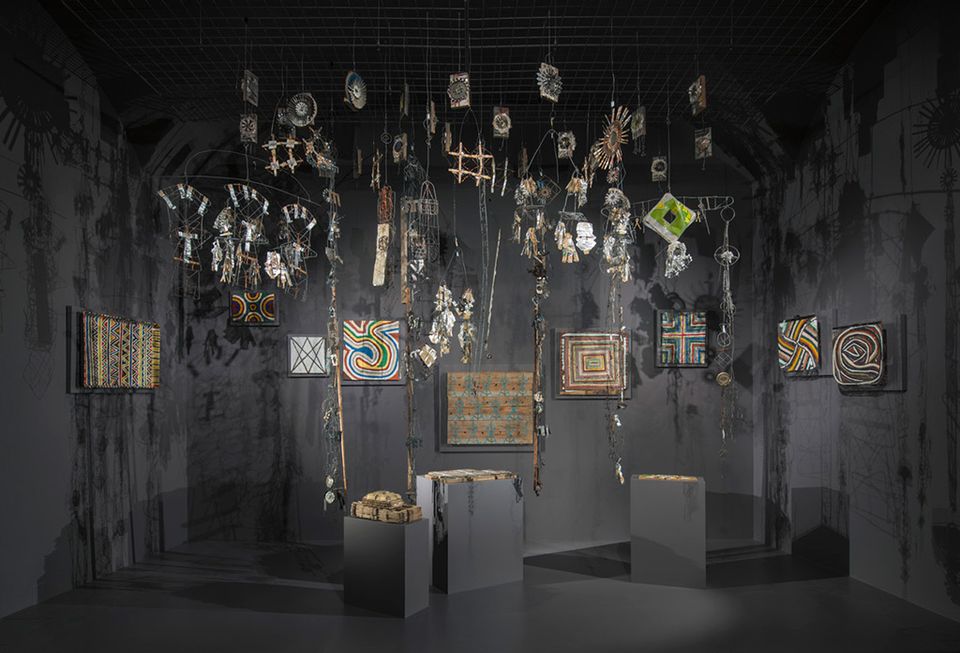

This is the seventeenth in a series of personal observations about how people experience and explore museums. Take a look at Howard's other blog posts about seeing things.
The story behind Emery Blagdon's The Healing Machine had captivated me even before I saw the installation in SAAM's reimagined galleries for folk and self-taught art. I find myself coming back to it frequently, just staring into it, and wondering about the artist and his belief in the ability of his artwork to be a catalyst for healing.
Blagdon created his healing environment in a small building he constructed on his farm near Callaway, Nebraska, in order to alleviate pain and illness. He cared for family members who suffered from cancer and felt there must be ways to alleviate such suffering. Blagdon began working on his creation in the late 1950s, and was still working on it when he died in 1986. His installation used found objects such as hay baling wire, magnets, and remnant paints from farm sales, as well as mineral salts and other "earth elements" that he obtained from a local pharmacy. Some of the wire pieces bent into hoops remind me of dreamcatchers or talismans. The paintings feel rife with symbolic gesture. In the thirty years he worked on the piece, he added to and rearranged his array and made constant adjustments in order to channel positive, healing forces. The individual paintings and sculptures, which Blagdon called "his pretties," are suspended from the ceiling and also occupy spaces on the floor. Blagdon believed that energies were drawn upward from the building's earthen floor into the space and worked with the hanging pieces to create a functional machine.
Healing is a theme that finds itself present in other works in the folk and self-taught galleries, and is an idea that artists throughout time and across cultures have grappled with. But, in many ways, isn't healing one of the reasons we seek out art in the first place? We often come to a museum to let a work of art find us, whether it be to fix a broken heart, a troubled soul, or even a failing body.



















